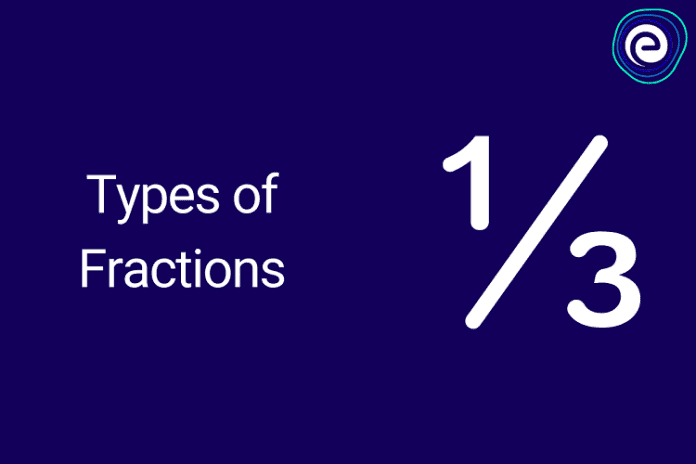Last Updated on February 10, 2025 by Bisma Sehar
The fraction is a mathematical quotient in which the numerator is divided by the denominator. Many pupils enjoy fractions, while others dislike them. A special thanks to calculator-online.net for creating a free multiple fraction calculator that allows you to quickly compute the simplified forms of fractions. What do you think about it?
So, let’s get down to business. We’ll speak about several fraction kinds in this post.
Let’s get started!
Table of Contents
Types of Fractions:
The following are the several types of fractions that you should be aware of:
Proper Fraction:
A proper fraction has a numerator that is less than the denominator.
Numerator<Denominator
Examples:
Proper fractions include 5/7, 5/8, 1/2, and 2/9.
Improper Fraction:
When the numerator exceeds the denominator, the fraction is referred to as an improper fraction.
Numerator>Denominator
Example:
The improper fractions 6/2, 4/3, 5/4, and 7/6 are all the same. If you need to divide improper fractions quickly, you may use the free online dividing fractions calculator.
Mixed Numbers:
The mixed fraction is a mixture of a whole number and a fraction.
Examples:
2 7/5, 1 45, 2 56, and 3 5/9 are mixed fractions. A free mixed number calculator may be used to multiply mixed fractions.
Like Fractions:
Like fractions are fractions that have the same denominators.
Examples:
2/8, 6/8, and 5/8 are like fractions.
Important:
Adding and subtracting similar fractions is simple. All you have to do is add or subtract numerators and make no assumptions. If you get stuck, you may use the free subtracting fractions calculator to assist you.
Unlike Fractions:
Fractions with different denominators are referred to as unlike fractions.
Examples:
2/8, 2/9, 2/4, and 2/5 are examples of unlike fractions.
Important:
Unlike fractions cannot be added or subtracted as like fractions. You must remember the following things while adding or subtracting these fractions:
- Find the fraction with the smallest common multiple.
- After that, divide the LCM with the denominators of each fraction one by one.
- When you’re finished, multiply the resultant integers with the numerators of each fraction, in that order.
- Finally, multiply or divide all of the numerators by the denominator, which is LCM.
This is how unlike fractions are resolved. However, using a free online multiple fraction calculator is the quickest method.
Equivalent Fractions:
Equivalent fractions are fractions that provide the same result in the end.
Examples:
1/2 and 50/100 are considered equal fractions.
Unit Fractions:
Unit Fractions are fractions with a numerator of 1 and any denominator.
Example:
1/5, 1/6, and 1/2 are all unit fractions that may be resolved instantly with the help of a multiple fraction calculator.
Resolving Fractions with a Fraction Calculator:
The finest tool for simplifying fractions is the free fraction to whole number calculator. Let’s see how it works in practice!
- Choose whether you wish to multiply, divide, or add, subtract 2 or 3 fractions.
- After that, fill in the numerators and denominators in the appropriate areas.
- Also, choose the operation you wish to apply to the fractions.
- Here’s what you’ll get if you press the calculate button.
What a frenzy!
Let’s Wind Up:
Finally, everyone is looking for a better technique to tackle mathematical difficulties. Using a multiple fraction calculator and other free tools can undoubtedly speed up your calculations, but it is critical to understand how to resolve fractions manually as well. We hope this guidepost will help you a lot in making a difference among various types of fractions.
Wishing You Luck!
Apart from that if you want to know about How To Balance In Hand Salary & Savings then please visit our Business category
















